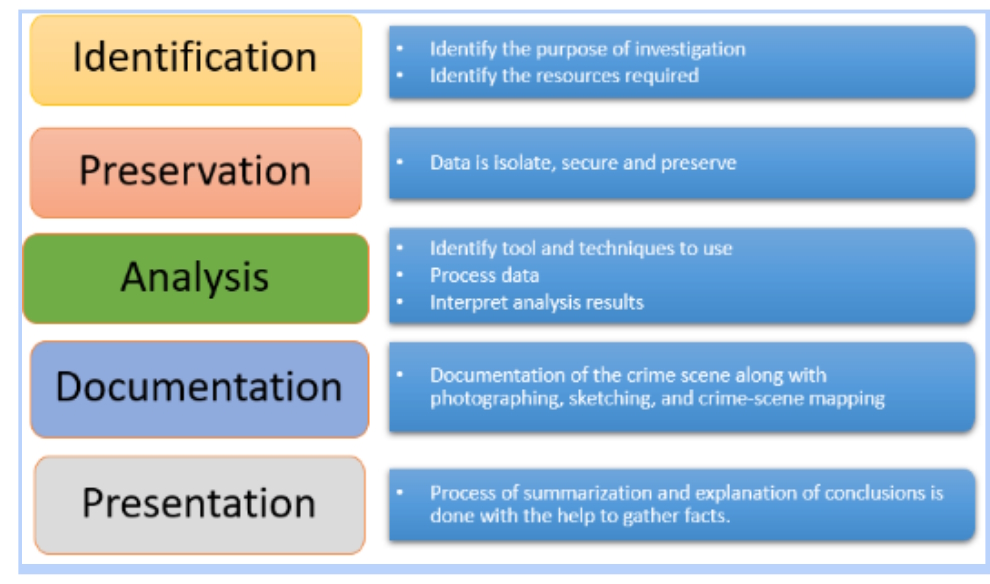Uncover the Evidence With Digital Forensics
- Written by NewsServices.com

Digital forensic investigation is the process of recovering and analyzing digital evidence found on computers, networks, and other digital storage mediums to determine if a crime has been committed or if any wrongdoing has occurred. It can be used to identify the source of an attack, track stolen data, recover deleted files, and uncover evidence that could be used in a court of law. Digital forensics is an important tool for protecting companies from cyberattacks, as well as investigating any suspicious activity that may have taken place on their networks.
Definition of Digital Forensics
Digital Forensics is a type of investigation that involves the analysis of digital evidence to help identify, collect, preserve and present evidence in court. It can be used to uncover a variety of offences, from financial fraud or identity theft to computer crime and espionage. A forensic investigator is a professional who specializes in gathering evidence and analyzing data to uncover the truth in criminal matters.
The main objective of digital forensics is to recover data from computers, cell phones, tablets and other electronic devices. To do this, investigators use various techniques such as disk imaging and file recovery software. They also analyze the data for any signs of tampering or malicious activity that may reveal a criminal’s intent or motive.
The process starts with an investigation into what happened to the device in question. This includes collecting all relevant information about the event such as date/time stamps, IP addresses and user accounts connected to it. Once all necessary information has been gathered, investigators use specialized software tools like EnCase Forensic Software or FTK Imager to create an image file that contains an exact duplicate of all data stored on the device’s hard drive at one point in time – known as a snapshot – which can then be examined for clues about what happened before or after the snapshot was taken.
Types of Digital Forensic Investigations
Digital forensics is an increasingly important and necessary part of modern law enforcement and criminal investigations. As the world becomes ever more connected and technology more advanced, digital forensics plays a crucial role in uncovering evidence for use by prosecutors and courts. Digital forensic investigations are used to uncover evidence of cybercrime, theft or fraud, terrorism, child exploitation, or any other type of criminal activity that has been conducted via digital means.
Several different types of digital forensic investigations can be used to uncover information. These include computer forensics, network forensics, mobile device forensics, database analysis and cloud computing analysis.
Computer Forensics: This type of investigation is often used to investigate computer-related crimes such as hacking or identity theft. It involves collecting data from computers or networks to analyze it and extract critical information related to the crime being investigated. Computer forensic investigators will often use tools such as packet sniffers (which capture packets sent over a network) or malware detectors (which detect malicious programs on computers) to identify malicious activity on a computer system or network.
Network Forensics: Network forensics is similar to computer forensics but focuses on investigating activities that occur over a network rather than on individual computers. Network forensic
Tools and Technology Used in Digital Forensics
Digital forensics is the use of technology and tools to investigate and analyze digital evidence, such as data stored on computers or other digital devices. Digital forensic experts use a variety of tools and technologies to examine data, identify evidence, and reconstruct events.
Forensic acquisition tools are used to make copies of digital evidence for examination. These tools can acquire various types of data from computer hard drives, removable storage media (such as USB drives), mobile phones, tablets, servers and networks. These copies are known as images or “forensic images” which contain an exact copy of the original data without altering it in any way.
Forensic analysis software is used to analyze the acquired images for evidence. Commonly used analysis applications include EnCase Forensic from Guidance Software; FTK Imager from AccessData; X-Ways Forensics from X-Ways Software Technology AG; Autopsy from Basis Technology Corp.; ProDiscover Basic/IR/PTK/CFFLite/SIFT Workstation from Technology Pathways LLC; Helix3 Pro by eTriever Corporation; Oxygen Forensics Suite by Oxs Solutions Ltd.; Cellebrite UFED Physical Analyzer by Cellebrite USA Corp.; ILook Investigator By Guide.
Process of a Digital Forensic Investigation
Digital forensic investigations are a complex and in-depth process used to uncover digital evidence. A digital forensic investigation typically involves the identification, collection, analysis, and reporting of digital evidence found on computers or other electronic devices. The primary goal of a digital forensic investigation is to provide solid evidence for criminal or civil proceedings.
The first step in a digital forensic investigation is to secure the device that contains the evidence. This ensures no tampering or destruction of data can occur during the investigation process. Once secured, investigators make an exact copy (or image) of all data stored on the device by using specialized software and hardware tools that create an exact copy without altering any existing data structures or files.
Next, investigators use various techniques such as keyword searches and file carving to search through the image for specific types of information pertinent to their case. File carving is a method used by forensics teams to recover deleted information from storage devices such as hard drives which often contain valuable evidence even after it has been deleted from view within traditional operating systems like Windows or MacOSX.
After collecting all relevant information from a device’s storage medium, investigators then analyze this collected data using sophisticated software tools designed specifically for this purpose such as EnCase Forensic Software Suite or FTK Im.
Challenges Faced by Investigators in Conducting a Digital Forensic Investigation
In today’s increasingly digital world, digital forensics is becoming an increasingly important tool for investigators. Digital forensics is the process of analyzing evidence from digital sources, such as computers and mobile devices, to uncover evidence in criminal or civil cases. This type of investigation can be extremely complex and time-consuming, requiring specialized skills and knowledge. However, there are also several unique challenges that investigators must face when conducting a digital forensic investigation.
One of the biggest challenges faced by investigators in conducting a successful digital forensic investigation is obtaining access to the necessary data. In some cases, it can be difficult to obtain authorization from third parties (such as internet service providers) who may control access to certain types of data or may require court orders before providing access. Additionally, if the device has been encrypted or password protected it can be difficult for investigators to gain access without compromising user privacy or security protocols.
Another major challenge faced by investigators is maintaining a chain of custody throughout the entire process. All evidence collected during an investigation must remain unaltered; therefore all data must remain secure while being analyzed and stored appropriately so that its integrity can be maintained throughout any legal proceedings that may arise from it.
Advantages and Disadvantages of Using Digital Forensics
Digital forensics is a rapidly evolving field that has become increasingly important in the digital age. It involves the use of specialized tools and techniques to identify, preserve, analyze, and report digital evidence. Digital forensics can be used to investigate computer crimes such as hacking, theft of data or intellectual property, fraud, cyberbullying and other malicious activities.
The advantages of using digital forensics are numerous. First and foremost, it is an effective way to investigate computer crimes quickly. By gathering relevant digital evidence such as documents stored on hard drives or emails sent by suspects, investigators can often get a good idea of what happened in a short period. Additionally, digital forensic tools have become increasingly sophisticated over the years making them more accurate than ever before when it comes to finding hidden data or uncovering connections between suspects or victims. Finally, digital forensic evidence can be used in court as it is considered reliable due to its accuracy and thoroughness when compared with traditional methods such as interviewing witnesses or searching through paper records.
Conclusion
A digital forensic investigation is an invaluable tool for law enforcement, legal teams, and private investigators. It provides a powerful way to uncover digital evidence and can be used to solve crimes, prosecute criminals, and protect organizations from cybercrime. With the expanding use of digital devices in today's world, digital forensic investigations will become even more important in the future. With the right tools and expertise to collect evidence from a variety of devices, it can help uncover hidden clues that can lead to solving cases faster than ever before.





